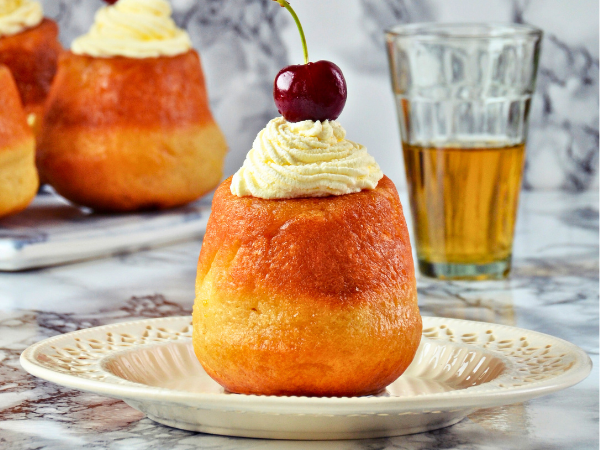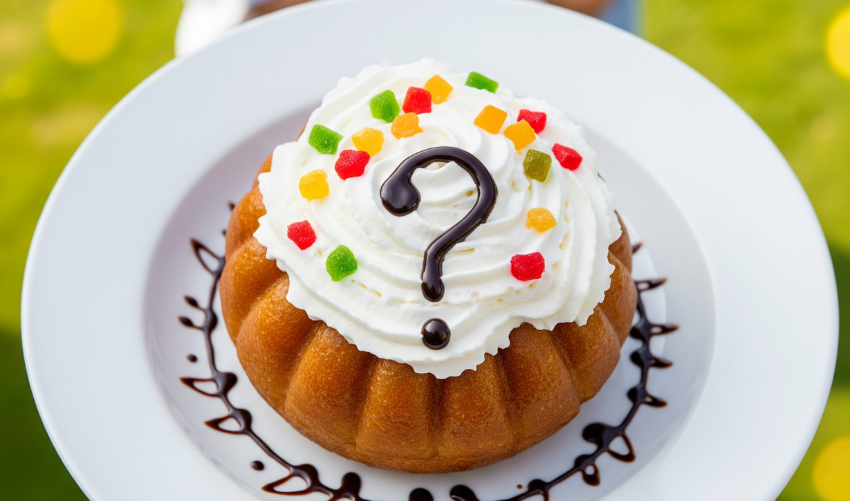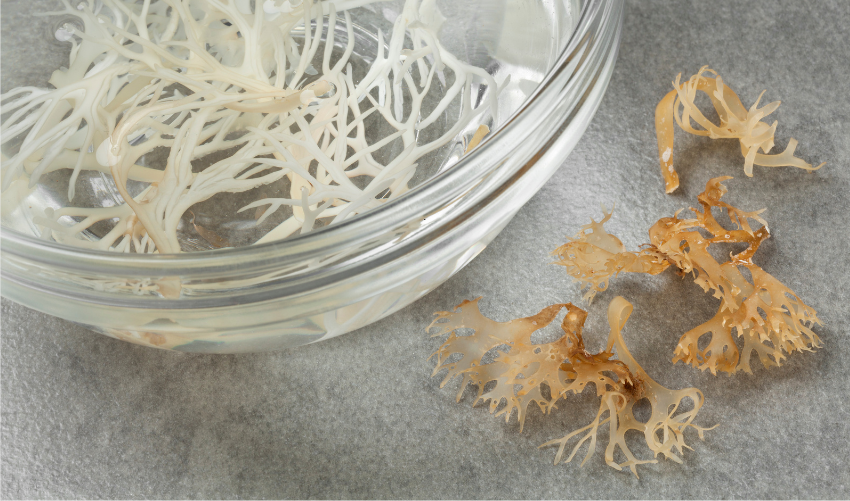When it comes to dessert, few options are as decadent and intriguing as Rum Baba. This delightful rum-infused cake is a favorite in many households, but you might wonder if it’s suitable for your kids.
This guide we’ll explore the ins and outs of Rum Baba. We’ll look at its ingredients, the effects of alcohol in desserts, and safer alternatives if you’re hesitant.
What Exactly Is Rum Baba?
This cake is not just your typical dessert; it carries a rich history and unique flavor profile. Let’s dive into its origins and characteristics.
A Classic French Pastry
Rum Baba, also known as Baba au Rhum, is a classic French pastry with a fascinating background. It traces its roots back to Eastern Europe, specifically Poland. The dessert gained popularity in France during the 18th century.
This cake is a yeast-leavened cake, which gives it a light and airy texture. It is often shaped like a small mushroom, making it visually appealing. The process of making Rum Baba involves several steps:
- Mixing dough: Ingredients like flour, sugar, and yeast create the base.
- Proofing: The dough rises, becoming fluffy.
- Baking: The dough is baked until golden brown.
After baking, the cake is soaked in a rich syrup. This soaking process is crucial for flavor. The syrup typically contains a significant amount of rum. This adds a special twist to the dessert.
Not Your Average Rum Cake
Rum Baba is truly not your average rum cake. Unlike many baked rum cakes, where the alcohol mostly cooks off, Rum Baba retains more alcohol due to its unique preparation.
This results in a cake with a high alcohol content. The flavor is rich and intense, making it a special treat. For children, this might raise concerns. The combination of the light cake and the syrup-soaked rum creates a dessert experience unlike any other.
Consider these factors before serving Rum Baba to kids:
- Alcohol content: The cake retains significant rum.
- Flavor profile: It has a strong, sweet taste.
- Texture: The small, airy cake can be hard to resist.
Serving Rum Baba as a dessert for kids might not be the best choice. The allure of the syrup-soaked cake is tempting, but the high alcohol content should be taken into account.
Alcohol In Baked Goods: The Science
People wonder how much alcohol remains after baking. This section dives into that science, focusing on the unique characteristics of Rum Baba.

Evaporation During Baking
During baking, heat reduces alcohol content in foods. However, the amount of alcohol that evaporates varies. Here are some key points:
- Some alcohol burns off during the baking process.
- Variable Reduction: How much evaporates depends on bake time, temperature, and the amount of alcohol used.
- Lingering Traces: Even after baking, a percentage of alcohol often remains.
To illustrate this, consider the following table:
| Baking Time | Alcohol Retention |
|---|---|
| 15 minutes | 40% remains |
| 30 minutes | 35% remains |
| 1 hour | 25% remains |
Even with longer bake times, some alcohol often stays. This means that in certain recipes, like Rum Baba, the alcohol content can be significant.
The Rum Baba Difference
Since the rum is added via a soak after baking, very little alcohol evaporates. As a result, a standard Rum Baba can contain a notable amount of alcohol per serving.
- Significant Retention: The soaking method means high alcohol content.
- Flavor Profile: The rum enhances the cake’s taste.
- Kid-Friendly Alternatives: Consider non-alcoholic options for children.
Choosing to serve Rum Baba to kids depends on personal comfort with its alcohol content. Understanding the baking process helps in making informed choices.
The Risks: Why Alcohol And Kids Don’t Mix
The primary concern is alcohol in the cake. The risks are clear: alcohol and kids do not mix well. Understanding these risks can help parents make informed decisions.
Developmental Concerns
Children’s bodies are still growing. Their systems are not the same as adults. Here are some key reasons why alcohol can be harmful:
- Developing Bodies: Kids are still growing. Their bodies are not ready for alcohol.
- Children’s livers are less efficient at processing alcohol: Kids’ livers do not break down alcohol well. This can lead to higher alcohol levels in their system.
- Lower Tolerance: Even small amounts can have a stronger effect on children. What may seem harmless to an adult can be dangerous for a child.
- Brain Development: Alcohol can potentially impact developing brains. It may lead to learning and behavior issues.
The table below summarizes the effects of alcohol on children’s development:
| Concern | Effect |
|---|---|
| Body Processing | Higher alcohol levels, slower processing |
| Brain Function | Potential learning and behavior issues |
| Social Behavior | Risk of early drinking habits |
Setting Precedents
Introducing alcohol to children, even in small amounts, sets a dangerous precedent. Here are some important points to consider:
- Taste for Alcohol: Introducing the taste of alcohol at a young age can be concerning. It may lead to a desire for alcoholic beverages later in life.
- Mixed Messages: Allowing kids to have alcohol can confuse them. They may not understand safe alcohol consumption.
- Family Habits: Children often mimic adult behaviors. Serving Rum Baba to kids can normalize alcohol consumption.
Parents need to be clear about their stance on alcohol. Consistent messages help children understand boundaries. Discussing the reasons behind these rules can further strengthen their understanding.
Making Informed Choices For Your Family
Making informed choices for your family is important. Understanding the ingredients and potential effects is crucial. Rum Baba contains rum, which raises questions about serving it to children. Consider the child’s age and the health impacts of alcohol.
Consider The Child’s Age
When deciding whether to serve Rum Baba, consider the child’s age. Different age groups have different tolerance levels for alcohol.
- Infants & Toddlers: Absolutely no alcohol – even trace amounts.
- Older Children/Teens: Still generally advised to avoid, given the higher retained alcohol in Rum Baba.
Alcohol can have serious effects on young bodies. For this reason, it’s best to avoid serving Rum Baba to young children. Most recipes for Rum Baba soak the cake in rum, which means it retains a higher alcohol content. This can be harmful, especially for infants and toddlers.
Use a table to summarize age recommendations:
| Age Group | Recommendation |
|---|---|
| Infants & Toddlers | Absolutely no alcohol |
| Older Children/Teens | Generally advised to avoid |
Keeping these factors in mind helps in making a safe choice for your family. Protecting children’s health should always come first.
Safer Alternatives
There are several safer alternatives to Rum Baba for dessert. You can still enjoy delicious flavors without the risks associated with alcohol.
- Alcohol-Free Syrups: Make a rum baba with a rum-flavored extract syrup – not actual rum.
- Fruit-Based Desserts: Opt for naturally sweet and child-friendly treats.
- Traditional Rum Cake (Baked): While some alcohol remains, it’s generally much less than in Rum Baba.
These alternatives ensure that children can enjoy dessert without the dangers of alcohol. For example, using fruit puree or flavored extracts adds sweetness without compromising safety. Kids love fruity flavors, making these options appealing.
Consider these recipes:
- Fruit Salad with Honey Drizzle
- Chocolate Banana Muffins
- Vanilla Pudding with Berries
These options are not only safe but also nutritious. They provide a delightful experience for kids while ensuring their well-being. Choose wisely and keep your family safe.





Leave a Reply